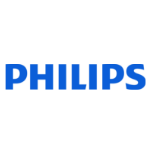Dark-field X-ray imaging
This project seeks to ensure the reliability of a clinical dark-field x-ray (DAX) radiography system, a promising innovation that could increase the uses of x-rays – in particular enabling early, cost-effective diagnosis of chronic obstructive pulmonary disease. The challenge this project addresses is to make sure DAX can be as effective in a clinical setting as it is in the lab.
Origins
Conventional X-ray imaging still relies on the differences in attenuation of X-rays by the various body tissues that drove the seminal discoveries by W.C. Roentgen in 1895. For the first time since then, advances in microstructure gratings technology promise to add a truly new dimension to diagnostic X-ray imaging by capturing the X-ray dark field, which is sensitive to much different physical properties of body tissue.
Team
This project involves two EIT Health members: KIT Karlsruhe Institut Fuer Technologie from academia and Philips Electronics Nederland B.V. from the industrial sector. These two hi-tech-focused members are joined by MicroWorks, a specialist in x-ray technology.
The project
The DAX project paves the way to commercialise a new x-ray imaging technology and to establish this diagnostic method in clinical use. The focus of this project’s work is on diagnosing chronic obstructive pulmonary disease, but the technology promises broader application. Dark-field x-ray (DAX) imaging utilises a grating interferometer in the beam, making it possible to detect structural changes in the lung that occur in chronic obstructive pulmonary disease.
The gratings represent the key component for DAX imaging. The established manufacturing process for the gratings is the so-called LIGA (lithography and galvanic) process. The performance of the gratings is well known under controlled laboratory conditions, but their implementation and performance in a clinical radiography system has not been investigated so far. This is a key aspect for ensuring image quality and diagnostic accuracy under clinical conditions.
This project will address the long-term stability of the gratings when they are exposed to heat load and radiation close to an x-ray source. Ensuring long term stability of the gratings is a prerequisite for translation of dark-field imaging from academic and pre-clinical research to a product implementation and it therefore represents an important milestone.
Impact
By facilitating early diagnosis of chronic obstructive pulmonary disease, this innovation provides a major tool in addressing an ailment that the WHO has identified the third leading cause of death globally, claiming over 3 million lives each year and massively impacting the quality of life of patients. Early diagnosis would enable personalised treatment to significantly improve patients’ quality of life, and to decrease morbidity and socioeconomic burden. The technology also holds promise for other health applications.
Why this is an EIT Health project
The project follows the EIT Health goal of accelerating innovation to improve healthcare by providing European doctors with new diagnostic opportunities for the benefit of Europe’s citizens. It is also in keeping with the EIT Health focus area of “Health Care Pathways”, as early diagnosis of the common problem of chronic obstructive pulmonary disease can change the course of the disease and save lives.
External Partner:
- Microworks Gmbh
Members

Partner classification: Business
At Philips, our purpose is to improve people’s health and well-being through meaningful innovation. We aim to improve 2.5 billion lives per year by 2030, including 400 million in underserved communities.
We see healthcare as a connected whole. Helping people to live healthily and prevent disease. Giving clinicians the tools they need to make a precision diagnosis and deliver personalized treatment. Aiding the patient's recovery at home in the community. All supported by a seamless flow of data.
As a technology company, we – and our brand licensees – innovate for people with one consistent belief: there’s always a way to make life better.
Philips Electronics Nederland B.V.
Philips Electronics Nederland B.V., Boschdijk 525, 5622 Eindhoven, Netherlands
Key Activities in Corporate Innovation
Med Tech, ICT


CLC/InnoStars: Germany
Partner classification: Education, Research, Tech Transfer, Clusters, Other NGOs
Karlsruhe Institute of Technology (KIT) combines the tasks of a university of the state of Baden-Wuerttemberg with those of a research center of the Helmholtz Association in research, teaching and innovation with many health-related topics.
Karlsruhe Institute of Technology (KIT)
Karlsruhe Institute of Technology (KIT), Kaiserstraße 12, 76131 Karlsruhe, Germany
Key Activities in Research and Developement
Biomedical engineering, Life Sciences
Key Activities in Social Innovation
Healthcare provision
Key Activities in Business Creation
Incubation, Technology Transfer
Key Activities in Education
Entrepreneurship training, Technical faculties
